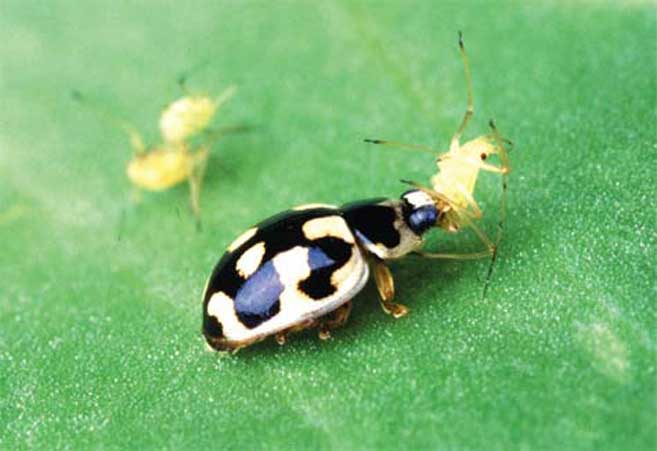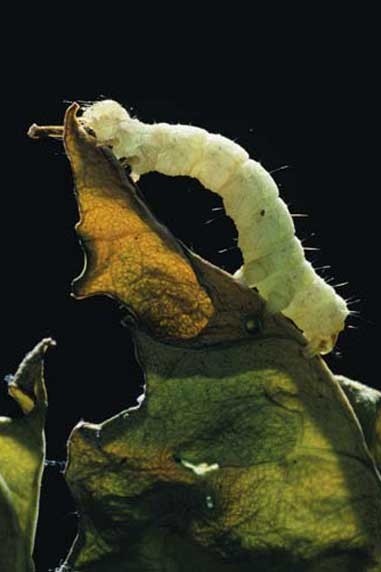Guarding the Garden: Barriers, Decoys and Cats on the Job
As this year’s crop of aphids, beetles and bunnies mature right along with the vegetables in our gardens, what are we to do to protect our plants—if we reject an arsenal of chemical sprays and potent powders?
We can employ a few protective devices instead, including screens, netting, row covers, crop rotation, pine cones, potsherds, working cats and dogs and maybe even a slingshot.
Have you ever used a “working cat” in your garden? Surely you have heard of a working dog; we have a livestock guardian dog that protects our pastured broilers from fox attacks and the like. But what about my broccoli and cauliflower seedlings? Freda and her son, Posse—feral cats that we took in last year—have proven to be quite the “cats on the job,” as the San Francisco ASPCA calls them. Its Cats on the Job Program is “dedicated to the lifetime adoption of under-socialized and feral cats into businesses and residences to provide ongoing companionship and rodent control.”
I think this is a great idea!
Our pair of cats on the job manage to keep our rabbit population under control, which increases the productivity of the spring vegetable garden. Their presence in the garden (which becomes a summer habit for them because they follow me back to the garden and soon realize the fun they can have) also deters birds from pecking at tomatoes and figs; they will even chase down a grasshopper for an afternoon snack.
If your cat is too well fed or on the lazy side, you may need to employ a different strategy to keep the squirrels at bay. Squirrels are notorious for taking one bite of a tomato and then throwing it on the ground. In some cases providing a water source for thirsty squirrels will temper this behavior; if it doesn’t, a barrier is the most assured prevention. Wrap your tomato cages with chicken wire to prevent access, leaving a section that you can easily open for harvest.
Providing a water source for the birds will also help deter them from pecking your ripe tomatoes. I have used shade cloth similarly to keep birds from pecking tomatoes; just wrap the lower parts of the cage, to about waist high.
A fence of netting wrapped around a small garden plot proves to be adequate protection from squirrels and rabbits, too, and it need be only about thigh high so you can easily step over the barrier. If you are among the growing number of people who keep a small flock of backyard chickens, these barriers may be necessary to keep them out of your vegetables, too.
Insect pests also threaten our plants and can be managed using barriers like floating row covers. These lightweight cloths allow 75% of the available light to pass through while keeping the adult stages of cabbage loppers, squash vine borers or cucumber beetles from making contact with your plants. When using floating row covers with certain crops, such as squash or melons, you will need to manually remove the cover every morning for several hours in order to allow for pollination to occur by allowing beneficial insects access to the flowers. Diligent record keeping helps me keep track of what was planted where each year. I will let lettuce follow potatoes or tomatoes but never potatoes follow tomatoes. Crop rotation is a way to manage garden pests by starving out a disease or pest by removing the host. This is difficult in a small garden but those who manage larger plots can reduce the incidence of disease by keeping crops moving forward, if you will, to a new spot in the garden each year: one not previously occupied by a vegetable in the same family.
Trap plants are like decoys. They attract, feed and distract certain pests so they don’t find the stuff I really want. While some of my experiences are only anecdotal I think they are worth sharing because they seem to be working. One year Sweet Annie, an aromatic species of wormwood (Artemesia annua, also called Chinese or sweet wormwood) attracted every aphid in the kitchen garden single-handedly. As I monitored the aphid infestation that was contained on the plant, I noticed how the pests provided a hearty meal for ladybug larvae. In a couple of days these larvae devoured the aphids and matured into ladybugs. No more aphids on the Sweet Annie (or on my lettuces), and happy ladybugs.
Flea beetles are another pest problem that I deal with each year. I have noticed that flea beetles also love my arugula, so I plant rows of sacrificial arugula near my potatoes, eggplant and other susceptible vegetables. I harvest some of the early arugula for salads and leave the rest to mature and trap the flea beetles. When the time is ripe I harvest the pests along with the damaged greens and throw them in the burn barrel for efficient disposal. If the greens aren’t in too bad shape I use them to make arugula pesto or arugula-topped pizza.
The verdict is still out on the worst vegetable pest that I contend with: the striped and spotted cucumber beetle. This little wonder eats and spreads disease among the cucurbit vegetable family. Cucumbers, squash and melons are favorites of the cucumber beetle, which eats foliage, fruit and blossom. Their larvae also feed on the roots and crowns of young seedlings. Plus, they transmit bacterial wilt and cucumber mosaic virus all the while.
It seems that this beetle also likes amaranth so (although, be warned, it can be a bit weedy) I let a patch of the stuff reseed and grow nearby each year as it attracts the cucumber beetle away from my desired crops. Regular pest inspections usually reveal clean cucumbers and amaranth riddled with holes. Unfortunately the two worst pests cannot be caught easily—the flea beetle and the cucumber beetle—but I will continue my quest to control them without using conventional pesticides.
Other tricks for keeping pesticide use to a minimum:
- Always keep a bucket of soapy water handy in the garden and do regular pest inspections. Colorado potato beetle larvae and mature beetles can be picked off and dropped into the bucket, along with any other pest you can catch.
- Use a wooden plank to corral squash bugs. Lay it alongside your squash and zucchini plants and at night the squash bugs will seek shelter beneath the plank. In the morning walk on the plank to crush the pests beneath.
- Protect little seedlings by covering them with pint- and quart-sized green mesh berry baskets. Secure them with a pin of some sort so they do not blow away.
- Pinecones and broken pieces of terracotta can be used in containers to deter digging by squirrels.
- Lay chicken wire on the ground and secure it to posts, leaving several feet to fold outward at the top. This barrier will keep ground hogs and raccoons out of the garden. They will be unable to dig beneath the fence and if the try to climb the chicken wire their weight will pull the top of the wire down so they will never make any progress!
- Electrified netting may be an option for the serious vegetable gardener; we use them to protect sheep and chickens and it proves very effective.







